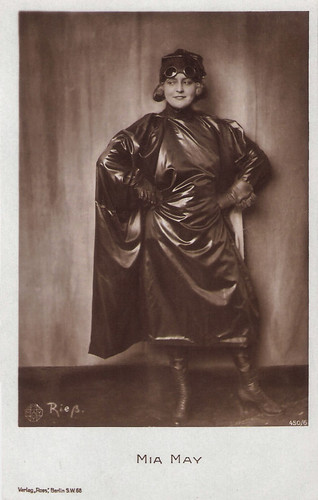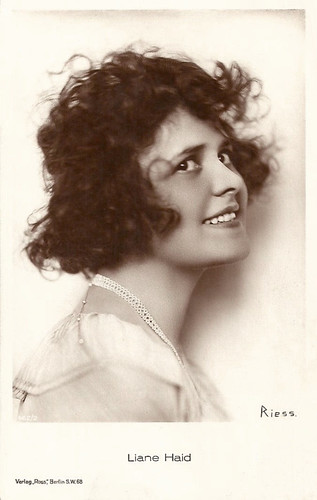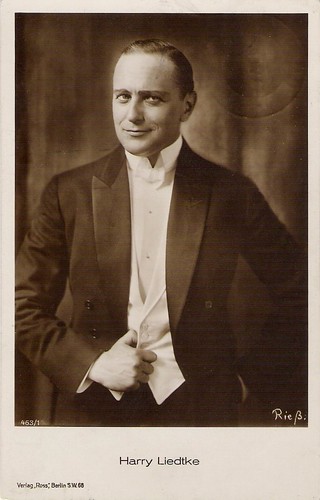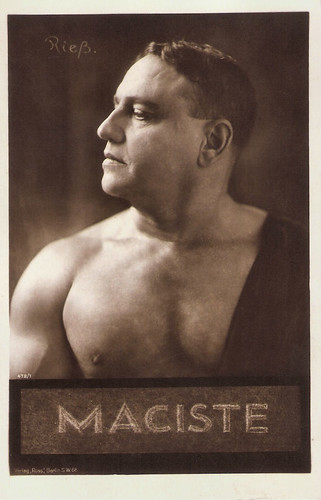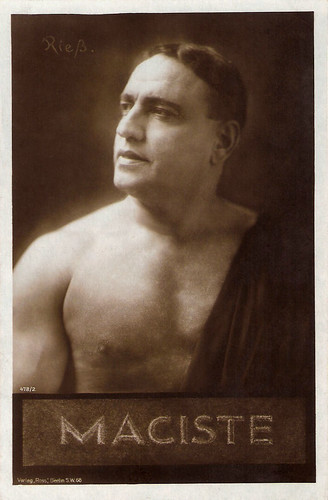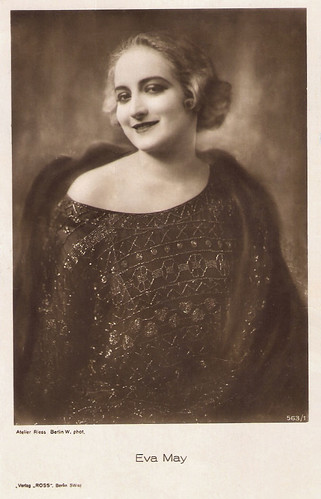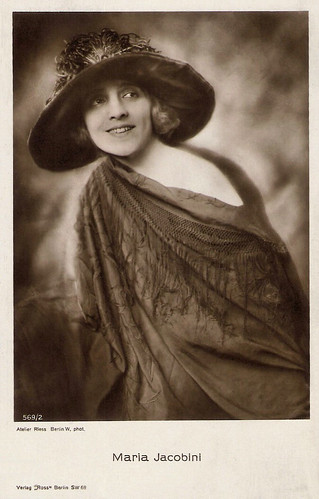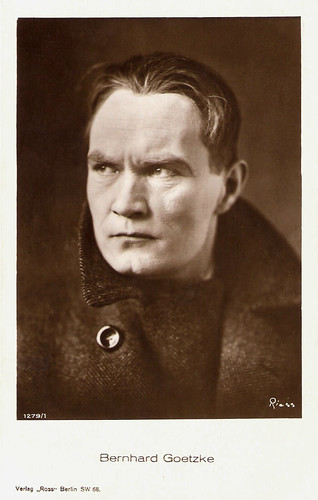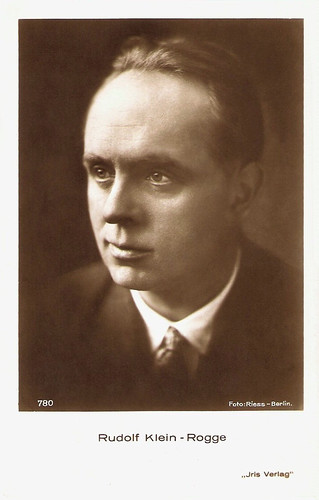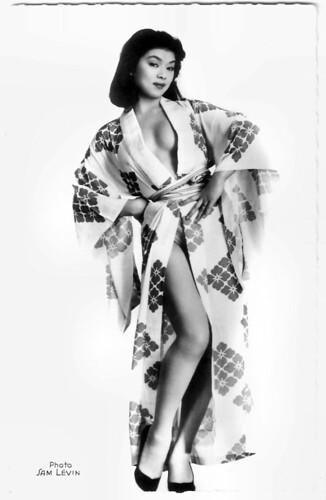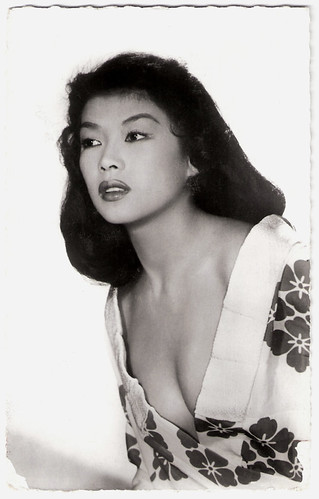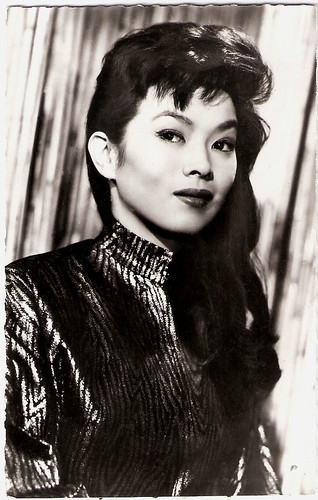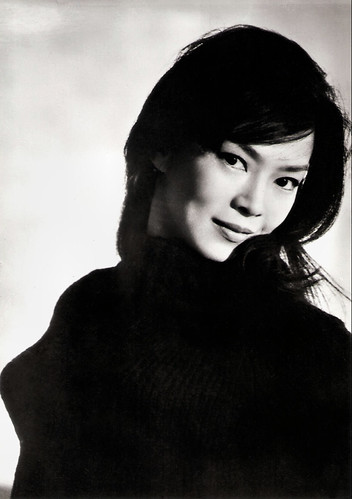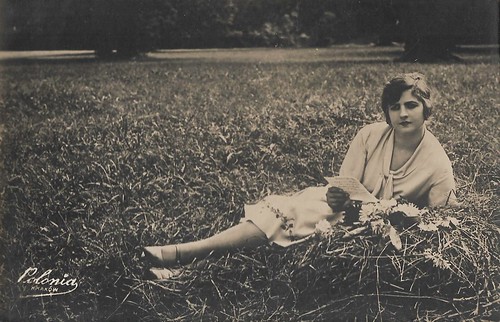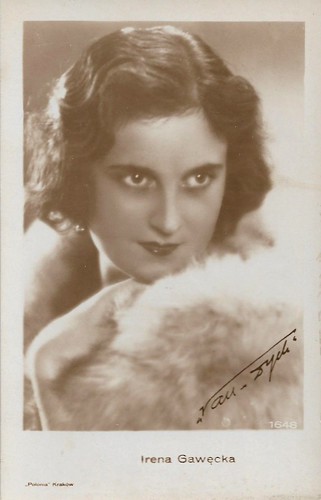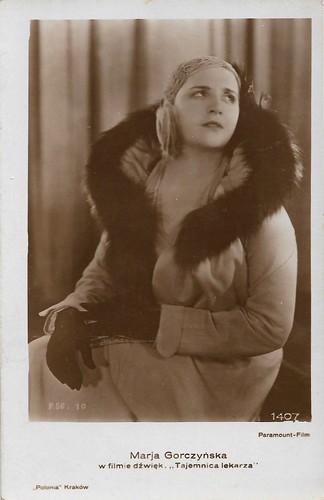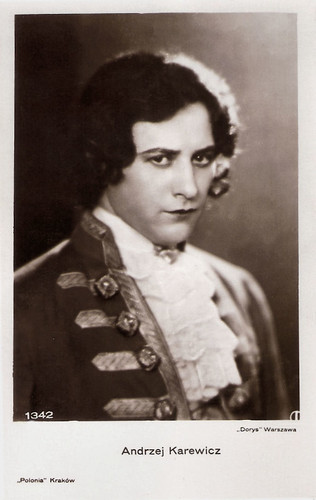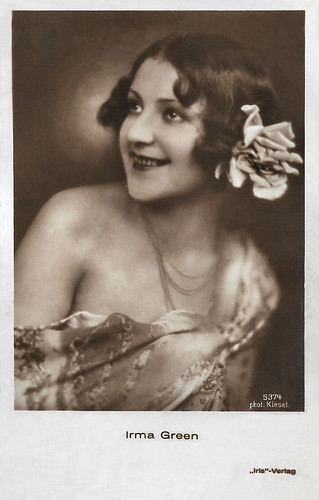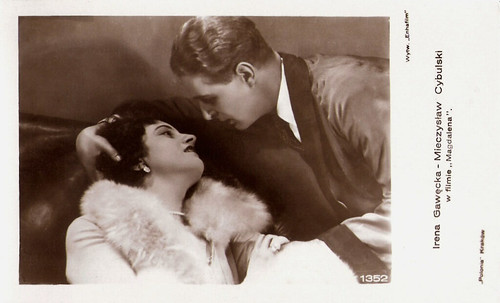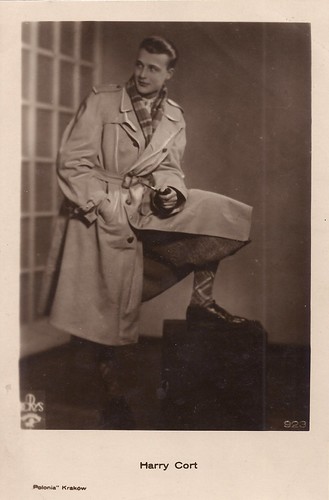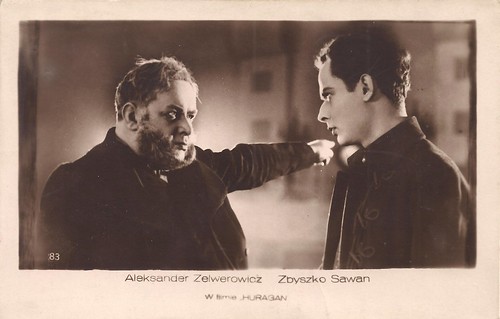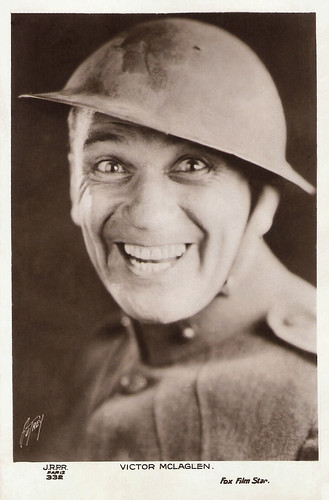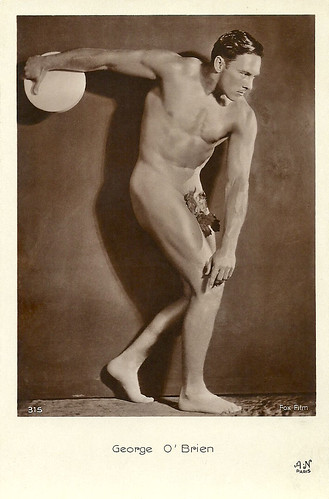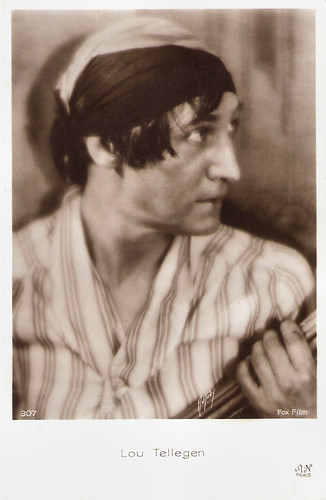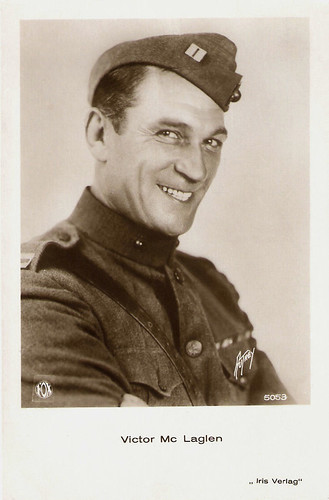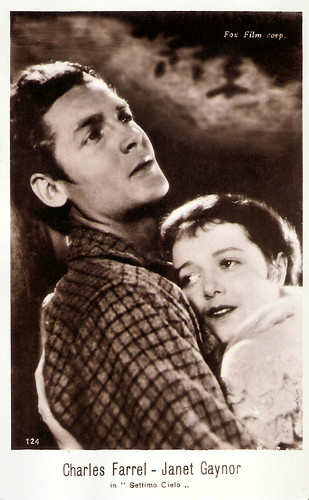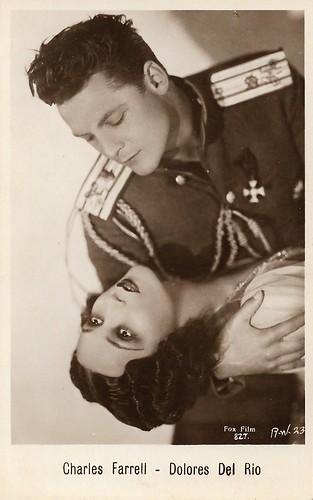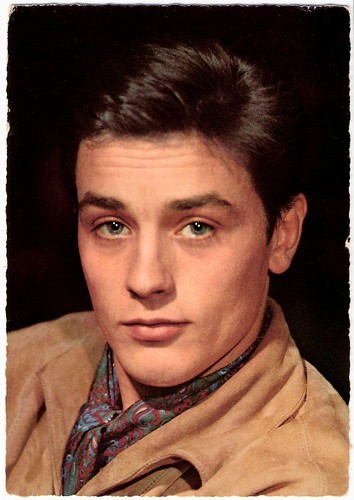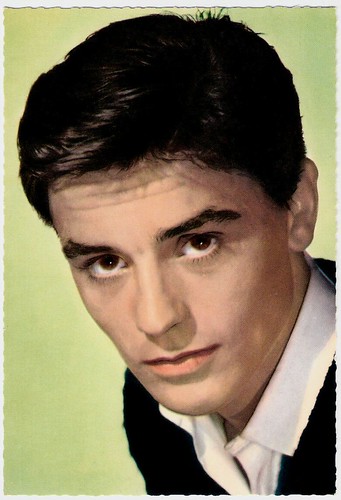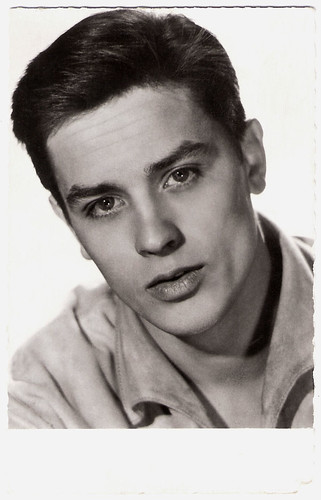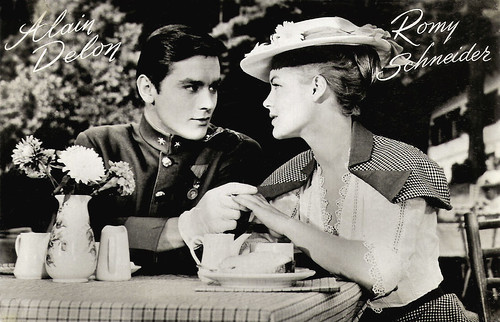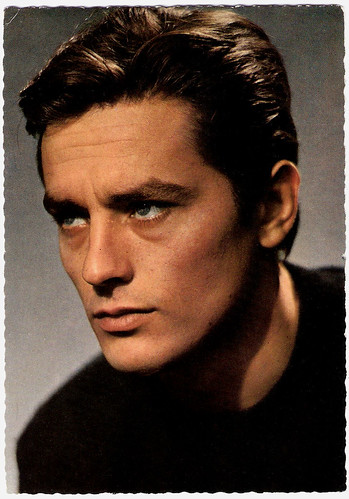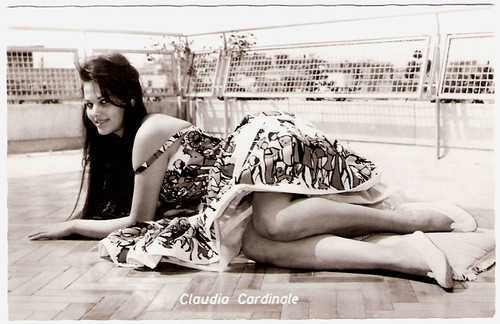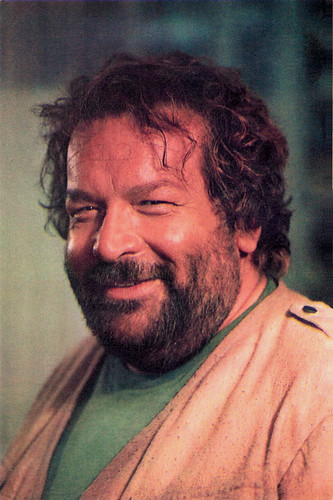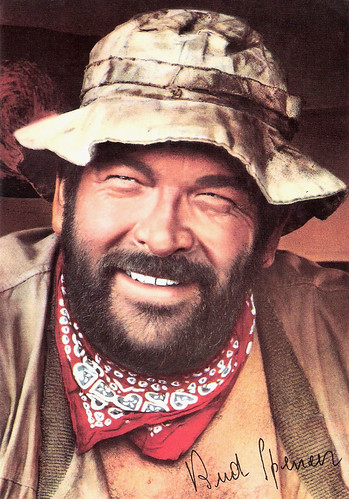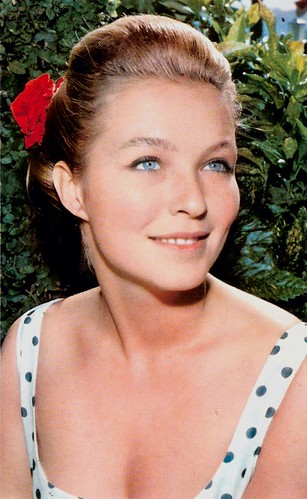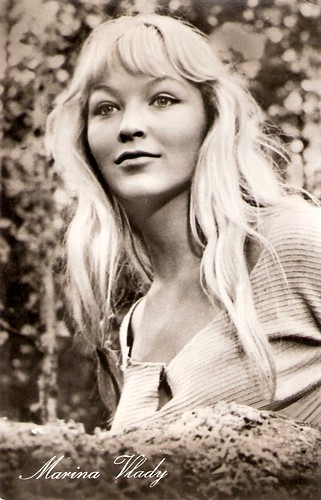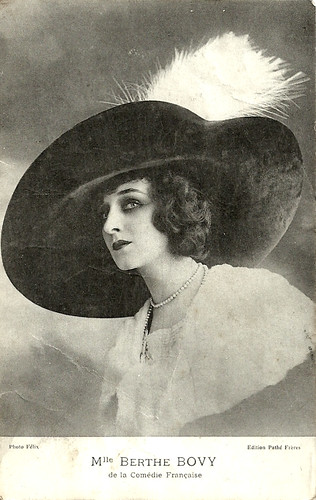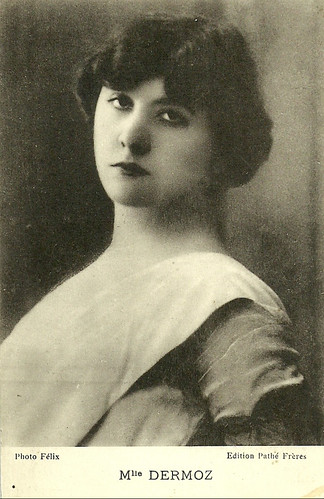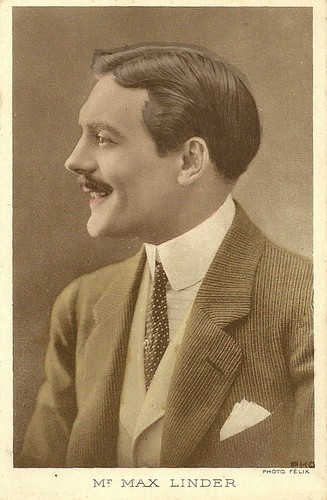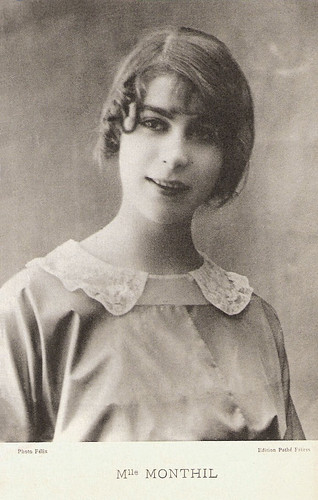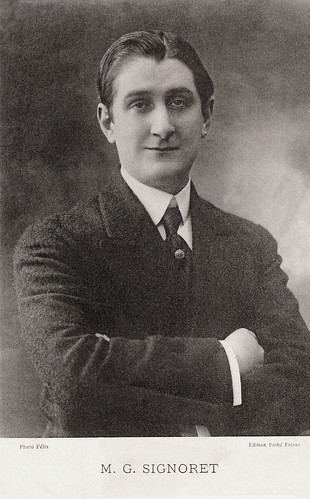In 2012, collector Amit Benyovits started our love for Massilia collectors cards. Last week he sent me scans of a new acquisition, a series of 50 'Premium' collectors cards from Belgium. The cards were produced for Chocolaterie Clovis in Pepinster, and while Belgium is a bilingual country, the texts on the flip sides of the cards are both in French (the language spoken in Wallonia) and in Dutch (spoken in Flanders). The cards were printed in Italy by Bromofoto in Milan, and the portrayed stars are all well known Hollywood movie actors. There are no dates on the cards, but Amit and I guess they were made in the late 1940s.
![Errol Flynn in Captain Blood (1935)]()
Errol Flynn. Belgian collectors card by Chocolaterie Clovis, Pepinster. Photo: publicity still for Captain Blood (Michael Curtiz, 1935). Collection: Amit Benyovits.
![Ingrid Bergman]()
Ingrid Bergman. Belgian collectors card by Chocolaterie Clovis, Pepinster, no. 5. Photo: Metro Goldwyn Mayer. Collection: Amit Benyovits.
![Olivia de Havilland]()
Olivia de Havilland. Belgian collectors card by Chocolaterie Clovis, Pepinster, no. 13. Photo: Warner Brothers. Collection: Amit Benyovits.
![Clark Gable]()
Clark Gable. Belgian collectors card by Chocolaterie Clovis, Pepinster, no. 14. Photo: Metro-Goldwyn-Mayer. Collection: Amit Benyovits.
![Myrna Loy]()
Myrna Loy. Belgian collectors card by Chocolaterie Clovis, Pepinster, no. 25. Photo: Universal International. Collection: Amit Benyovits.
![Dorothy Lamour]()
Dorothy Lamour. Belgian collectors card by Chocolaterie Clovis, Pepinster, no. 37. Photo: Paramount. Collection: Amit Benyovits.
![Rita Hayworth]()
Rita Hayworth. Belgian collectors card by Chocolaterie Clovis, Pepinster. Collection: Amit Benyovits
![Lana Turner]()
Lana Turner. Belgian collectors card by Chocolaterie Clovis, Pepinster. Collection: Amit Benyovits.
![Katharine Hepburn]()
Katharine Hepburn. Belgian collectors card by Chocolaterie Clovis, Pepinster. Collection: Amit Benyovits.
![Shirley Temple]()
Shirley Temple. Belgian collectors card by Chocolaterie Clovis, Pepinster. Collection: Amit Benyovits.
![Clovis card]()
Flipside of Belgian collectors card by Chocolaterie Clovis, Pepinster. Collection: Amit Benyovits.
Belgium must be the no. 1 Chocolate country in the world. There are many little chocolate factories and their 'pralines' are delicious. The Belgians, but also foreign visitors, go to shop for them on Sundays in the countless confiseries of the country.
I had never heard of Chocolaterie Clovis before. French Wikipedia writes that the factory does not exist anymore. Clovis was founded in 1920 in Pepinster. The company ceased operations in 1966, following the destruction of the buildings by fire.
In the 1930s and 1940s, there must have been a close connection between chocolate and film stars. Directors prepared their female stars for their close-ups by saying: "Show me your chocolate side, please", as commemorated by Dutch film star Cissy van Bennekom in an old interview with Vrij Nederland magazine.
Other Belgian chocolate firms, like Kwatta, also published film star postcards and included them with their products. So, this beautiful series of film star cards is one of the few things that still remind us of Chocolaterie Clovis. A sweet reminder.
![Hedy Lamarr]()
Hedy Lamarr. Belgian collectors card by Chocolaterie Clovis, Pepinster. Photo: Paramount. Collection: Amit Benyovits.
![Bing Crosby]()
Bing Crosby. Belgian collectors card by Chocolaterie Clovis, Pepinster. Collection: Amit Benyovits.
![Bette Davis]()
Bette Davis. Belgian collectors card by Chocolaterie Clovis, Pepinster. Collection: Amit Benyovits.
![Maurice Chevalier]()
Maurice Chevalier. Belgian collectors card by Chocolaterie Clovis, Pepinster, no. 34. Photo: Star. Collection: Amit Benyovits.
![James Cagney]()
James Cagney. Belgian collectors card by Chocolaterie Clovis, Pepinster, no. 40. Photo: Warner Bros. Collection: Amit Benyovits.
![Judy Garland and Fred Astaire in Easter Parade (1948)]()
Judy Garland and Fred Astaire. Belgian collectors card by Chocolaterie Clovis, Pepinster. Photo: Metro Goldwyn Mayer. Publicity still for Easter Parade (Charles Walters, 1948). Collection: Amit Benyovits.
The 50 Clovis photos came housed in a special album. Amit Benyovits sent me some pictures of the high grade and well made album, which you can see below. Amit: "The card stock is very thick and of very high quality pictures and paper."
In his mails to me, Amit also mentioned that the album size is 10 x 11 3/4" (25 x 30 cm) and the card size 6 1/2 x 8 7/8" (16,5 x 22,5 cm). Among the 50 cards there are at least 8 different backs but all with Clovis Pepinster either stamped or pre-printed on the backs. Sometimes the cards have the backs showing they were produced by a well known postcard publisher in Italy, Bromofoto in Milano (Milan).
Amit: "I'm dating these in the 1940s as some stars only began their careers during that time. It is mine and Cliff Aliperti's as well as Troy Kirk's opinion that these are what we call in North America 'Premium' photos. Premium photos are those that are acquired from the company. By redemption of something you had to mail in ...in Clovis' case probably a certain number of Clovis cards plus some cash too. We are just speculating and hope that you may be able to shed some light on how these were acquired by collectors."
My guess is that the cards were not sold, but were included as gifts in the Clovis Star chocolate boxes. Customers got probably hooked and must have lost their nice figures while collecting all these beautiful star cards.
The albums could be bought in the chocolate shops. Anyway that was - and still is - one of the traditions of collecting cards in the Netherlands. Another form of collecting is buying packages of cards in tobacco shops, like the famous Panini cards of soccer players and pop stars.
Clovis also made other series of collectors cards, for example a series with cyclists. Then and now, cycling is a very popular sports in Belgium.
I like Amit's Clovis star cards very much and only had two Clovis cards in my own collection. So Amit, thank you very much for sharing this new acquisition with us!
![Clovis album]()
![Clovis album]()
![Clovis album]()
![Clovis album]()
Album for Belgian Star collectors cards by Chocolaterie Clovis, Pepinster. Collection: Amit Benyovits.
Sources: Amit Benyovits and Wikipedia (French).

Errol Flynn. Belgian collectors card by Chocolaterie Clovis, Pepinster. Photo: publicity still for Captain Blood (Michael Curtiz, 1935). Collection: Amit Benyovits.

Ingrid Bergman. Belgian collectors card by Chocolaterie Clovis, Pepinster, no. 5. Photo: Metro Goldwyn Mayer. Collection: Amit Benyovits.

Olivia de Havilland. Belgian collectors card by Chocolaterie Clovis, Pepinster, no. 13. Photo: Warner Brothers. Collection: Amit Benyovits.

Clark Gable. Belgian collectors card by Chocolaterie Clovis, Pepinster, no. 14. Photo: Metro-Goldwyn-Mayer. Collection: Amit Benyovits.

Myrna Loy. Belgian collectors card by Chocolaterie Clovis, Pepinster, no. 25. Photo: Universal International. Collection: Amit Benyovits.

Dorothy Lamour. Belgian collectors card by Chocolaterie Clovis, Pepinster, no. 37. Photo: Paramount. Collection: Amit Benyovits.

Rita Hayworth. Belgian collectors card by Chocolaterie Clovis, Pepinster. Collection: Amit Benyovits
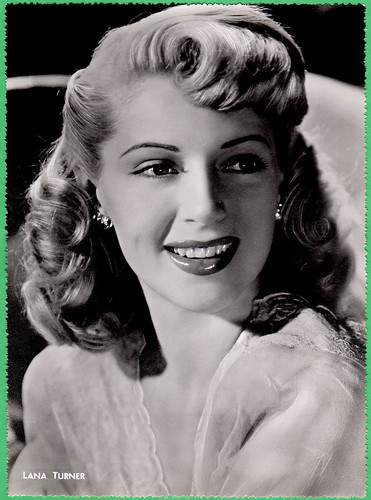
Lana Turner. Belgian collectors card by Chocolaterie Clovis, Pepinster. Collection: Amit Benyovits.

Katharine Hepburn. Belgian collectors card by Chocolaterie Clovis, Pepinster. Collection: Amit Benyovits.

Shirley Temple. Belgian collectors card by Chocolaterie Clovis, Pepinster. Collection: Amit Benyovits.

Flipside of Belgian collectors card by Chocolaterie Clovis, Pepinster. Collection: Amit Benyovits.
Show me your chocolate side, please
Belgium must be the no. 1 Chocolate country in the world. There are many little chocolate factories and their 'pralines' are delicious. The Belgians, but also foreign visitors, go to shop for them on Sundays in the countless confiseries of the country.
I had never heard of Chocolaterie Clovis before. French Wikipedia writes that the factory does not exist anymore. Clovis was founded in 1920 in Pepinster. The company ceased operations in 1966, following the destruction of the buildings by fire.
In the 1930s and 1940s, there must have been a close connection between chocolate and film stars. Directors prepared their female stars for their close-ups by saying: "Show me your chocolate side, please", as commemorated by Dutch film star Cissy van Bennekom in an old interview with Vrij Nederland magazine.
Other Belgian chocolate firms, like Kwatta, also published film star postcards and included them with their products. So, this beautiful series of film star cards is one of the few things that still remind us of Chocolaterie Clovis. A sweet reminder.

Hedy Lamarr. Belgian collectors card by Chocolaterie Clovis, Pepinster. Photo: Paramount. Collection: Amit Benyovits.

Bing Crosby. Belgian collectors card by Chocolaterie Clovis, Pepinster. Collection: Amit Benyovits.
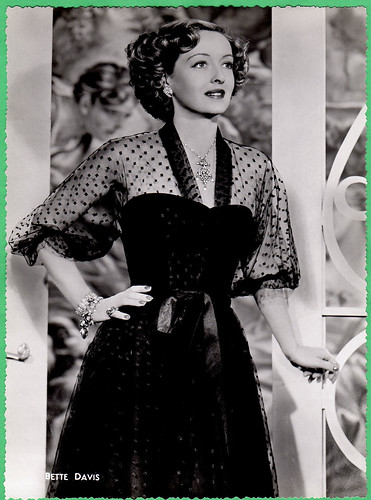
Bette Davis. Belgian collectors card by Chocolaterie Clovis, Pepinster. Collection: Amit Benyovits.

Maurice Chevalier. Belgian collectors card by Chocolaterie Clovis, Pepinster, no. 34. Photo: Star. Collection: Amit Benyovits.
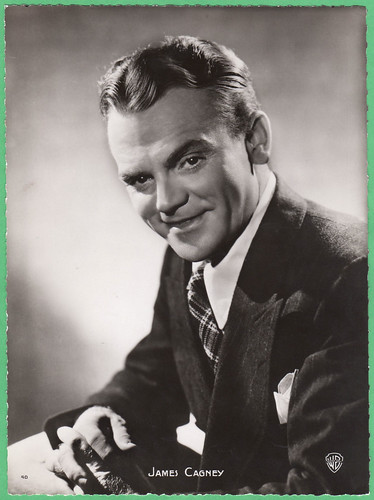
James Cagney. Belgian collectors card by Chocolaterie Clovis, Pepinster, no. 40. Photo: Warner Bros. Collection: Amit Benyovits.
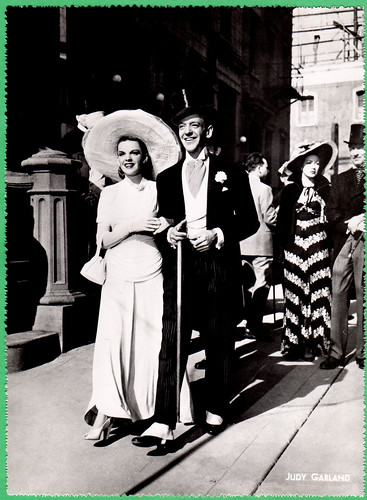
Judy Garland and Fred Astaire. Belgian collectors card by Chocolaterie Clovis, Pepinster. Photo: Metro Goldwyn Mayer. Publicity still for Easter Parade (Charles Walters, 1948). Collection: Amit Benyovits.
High grade and well made
The 50 Clovis photos came housed in a special album. Amit Benyovits sent me some pictures of the high grade and well made album, which you can see below. Amit: "The card stock is very thick and of very high quality pictures and paper."
In his mails to me, Amit also mentioned that the album size is 10 x 11 3/4" (25 x 30 cm) and the card size 6 1/2 x 8 7/8" (16,5 x 22,5 cm). Among the 50 cards there are at least 8 different backs but all with Clovis Pepinster either stamped or pre-printed on the backs. Sometimes the cards have the backs showing they were produced by a well known postcard publisher in Italy, Bromofoto in Milano (Milan).
Amit: "I'm dating these in the 1940s as some stars only began their careers during that time. It is mine and Cliff Aliperti's as well as Troy Kirk's opinion that these are what we call in North America 'Premium' photos. Premium photos are those that are acquired from the company. By redemption of something you had to mail in ...in Clovis' case probably a certain number of Clovis cards plus some cash too. We are just speculating and hope that you may be able to shed some light on how these were acquired by collectors."
My guess is that the cards were not sold, but were included as gifts in the Clovis Star chocolate boxes. Customers got probably hooked and must have lost their nice figures while collecting all these beautiful star cards.
The albums could be bought in the chocolate shops. Anyway that was - and still is - one of the traditions of collecting cards in the Netherlands. Another form of collecting is buying packages of cards in tobacco shops, like the famous Panini cards of soccer players and pop stars.
Clovis also made other series of collectors cards, for example a series with cyclists. Then and now, cycling is a very popular sports in Belgium.
I like Amit's Clovis star cards very much and only had two Clovis cards in my own collection. So Amit, thank you very much for sharing this new acquisition with us!




Album for Belgian Star collectors cards by Chocolaterie Clovis, Pepinster. Collection: Amit Benyovits.
Sources: Amit Benyovits and Wikipedia (French).


























